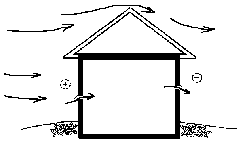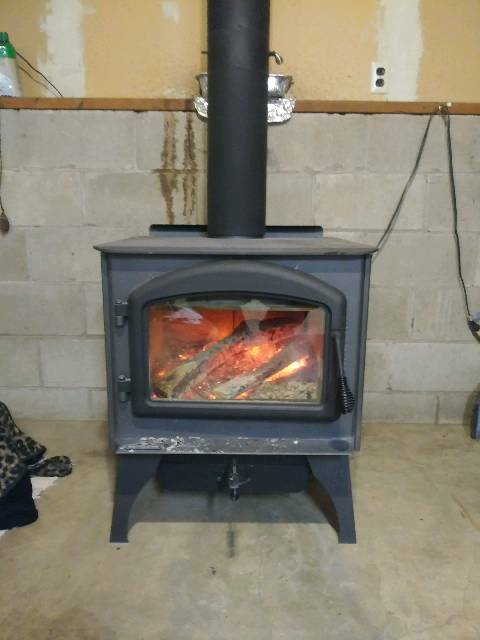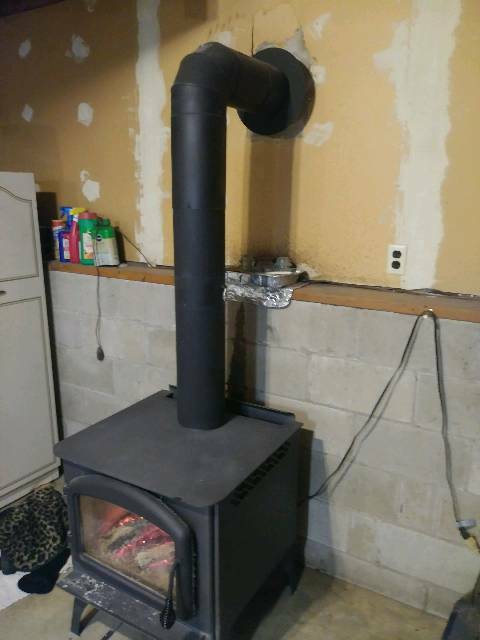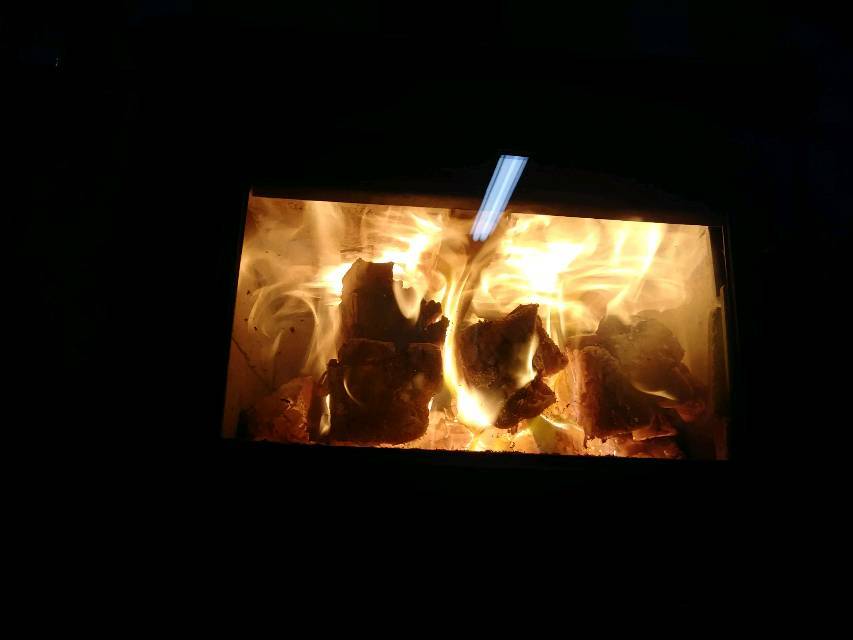The Outdoor Air Myth Exposed
Outdoor combustion air was a good idea . . . until it was studied
Building codes in various jurisdictions in North America require that fireplaces, and in some cases wood stoves, be provided with a source of combustion air from outdoors. This mostly takes the form of a four inch diameter hole in an outside wall with a duct attached running to the stove or fireplace, connected either directly to the firebox or to a location where it can be heated by the fire before entering the room. Sometimes the air is just dumped somewhere in the room.
There seem to be three theories behind this outdoor air supply, depending on who is doing the explaining.
- The first is to replace the air sucked out of the house by the wood burner, based on the idea that houses are airtight and the wood burner will use up all the oxygen.
- The second is to reduce the risk of smoking into the room, even when the room is depressurized by a big fan like a kitchen range exhaust.
- The third is to save energy by using outdoor air rather than indoor air that has already been heated.
But it doesn't matter which theory you pick; none of the three stands up to scientific scrutiny. It turns out that the most consistently reliable place from which to take combustion air is the room where the appliance is installed. Forget about outdoor air supplies as a way to make wood stoves and fireplaces work better or be more efficient. If your local building code forces you to install outdoor air, you will have no choice, but be aware that it will not reliably improve the performance of your wood burning appliance or result in higher efficiency of the system.
The supposed benefits of outdoor air are not supported by research results.
The outdoor combustion air myth got started almost fifty years ago when safety and construction standards were written for mobile homes. Because they were small and factory-built, it was believed that mobile homes were air tight. As a result, all wood, oil and gas furnaces, stoves and fireplaces had to get their air from outdoors. Because these air supplies were invariably routed straight down into the ventilated crawl space under the mobile home, they didn't cause too many problems, so it was assumed that they actually worked.
In the 1980s, when large exhaust systems – like downdraft kitchen range exhausts – began to cause spillage from fireplaces and stoves in reasonably tight houses, a consensus quickly formed around the idea of bringing combustion air from outdoors, just as had been done in mobile homes for decades. Such certainty existed among housing technologists and regulatory authorities on the issue of outdoor combustion air that it was made mandatory in most building codes. Unfortunately, the decision to enforce mandatory outdoor air rules was made before research was done to investigate how they actually work.
The supposed benefits of outdoor air are not supported by research results. Laboratory and field reports have revealed that providing outdoor air is not a simple or effective cure for spillage, and that some designs could create a fire hazard. Two forms of outdoor air supply have been used: passive make-up type air supplies and direct-to-combustion chamber air supplies.
Passive make-up air supplies
Passive air inlets are nothing more than holes in the wall. Wind effects may force air into the house or suck it out of the house, depending on the location of the hole relative to wind direction.A passive make-up type air supply is one that is not connected directly to the fireplace or stove combustion chamber. Since it is connected only to the house environment and not to the appliance, it flows air into a house only when the pressure inside is lower than the pressure outdoors, since air only flows to zones of lower pressure. Passive air supplies don't make wood burners work better, they just make the house leakier.
Wind effects around the house also affect the direction and volume of flow through a passive inlet. If the weatherhood of a passive inlet is on the windward side of a building, wind pressure is likely to force air into the building; if the weatherhood is on the downwind side, the negative pressure zone created by the wind is likely to draw air out of the house, possibly depressurizing it.
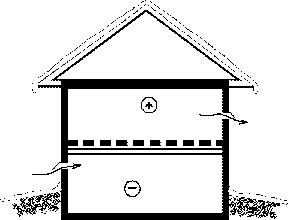
Passive air inlets do not supply combustion air, but flow air only in response to pressure differences. Here, the flow direction depends on where in the house the passive hole is located.More importantly, it is misleading to think of the hole in the wall approach as supplying combustion air. In fact, passive air supplies provide air only in response to pressure differences. In cold weather, when temperature difference produces a pressure difference due to stack effect, if a passive make-up air supply is located below the neutral pressure plane of the house (and there is no wind effect and no exhaust systems are operating), air will flow into the house. If, on the other hand, the passive inlet is located above the house neutral pressure plane, air will flow out.
It is useful to keep in mind a key physical principle:
AIR FLOWS TO ZONES OF LOWER PRESSURE through any available opening.
The real problem with the passive make-up air strategy is that it does not reliably supply combustion air, nor does it reliably reduce combustion spillage. Under favorable conditions it may tip the balance of driving and adverse pressures in favor of successful venting. This is why some wood heating specialists have reported performance improvements after the installation of a passive supply. However, it is also possible for a passive supply to cause spillage if air is drawn out of the house into a low pressure zone caused by wind effects. A remedial strategy that only works sometimes, and that may make the problem worse, is not a good strategy. A passive make-up air supply is really nothing more than another uncontrolled leak in the house envelope. A leaky house envelope is no guarantee of successful venting.
Direct-to-combustion chamber outdoor air supplies
Outdoor air supplies connected directly to the stove or fireplace combustion chamber may seem like a good idea and it was once believed that a direct supply would isolate the combustion appliance from room pressure variations. However, two key findings from the research into outdoor air supplies serve as cautions against the widespread use of direct combustion air supplies.
1. Smoke leakage can occur, even when the appliance has tightly sealed doors. If an exhaust fan like a kitchen range hood depressurizes the room to a level greater than the draft produced in the chimney, combustion gases will leak from any available opening, such as gaps in gaskets and the joints between factory-built chimney sections (illustration below). Because air flows to zones of lower pressure, a tightly sealed combustion/venting system will spill a smaller volume of smoke into the room than a leakier system, but it will still leak unless it is perfectly sealed. Perfect sealing is not a realistic goal because it would be difficult to achieve at the time of construction or installation and is unlikely to be permanent.
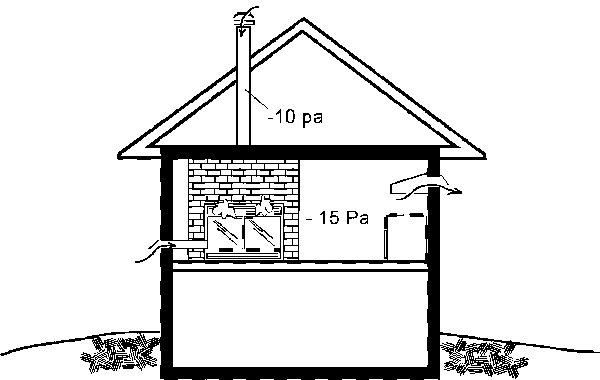
2. Direct air supplies can reverse flow direction if the weatherhood is exposed to a negative pressure in excess of chimney draft (illustration below). Hot exhaust gas passing through a combustion air duct constitutes a potential fire hazard. The pressure effects of wind force around buildings can be far more powerful than the pressures produced by chimney draft. Chimney draft ranges from zero to about 50 Pa (0.2 in. water column) in normal residential installations, whereas high wind effects can produce pressures around houses up to 100 Pa.
Continued at:
https://woodheat.org/the-outdoor-air-myth-exposed.html





